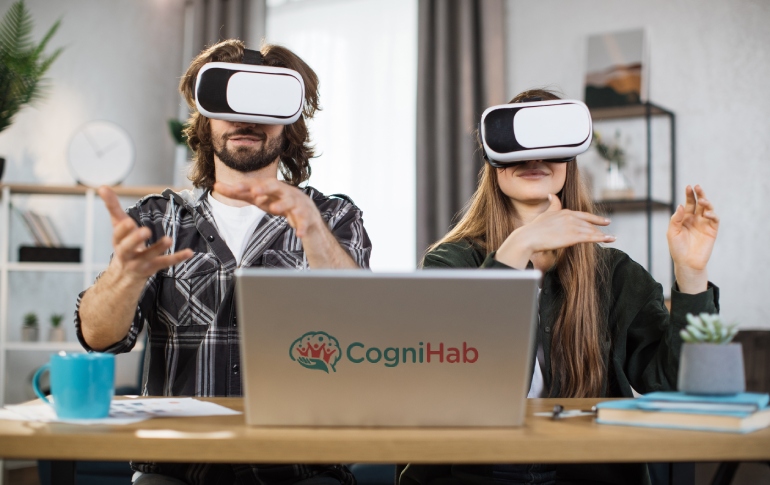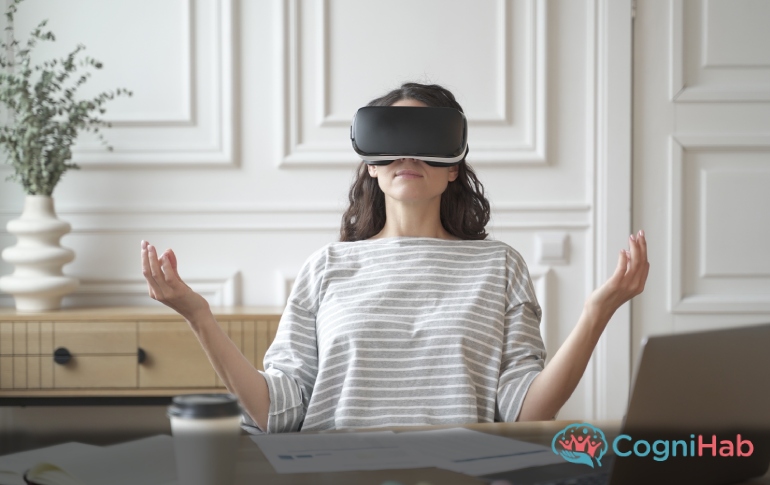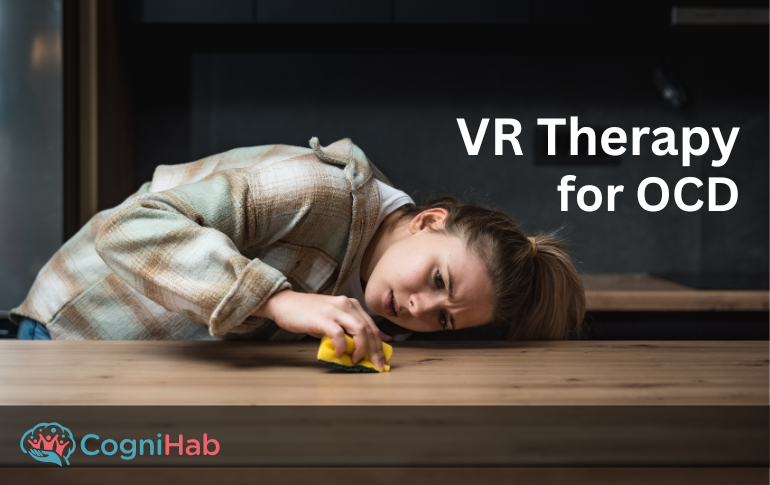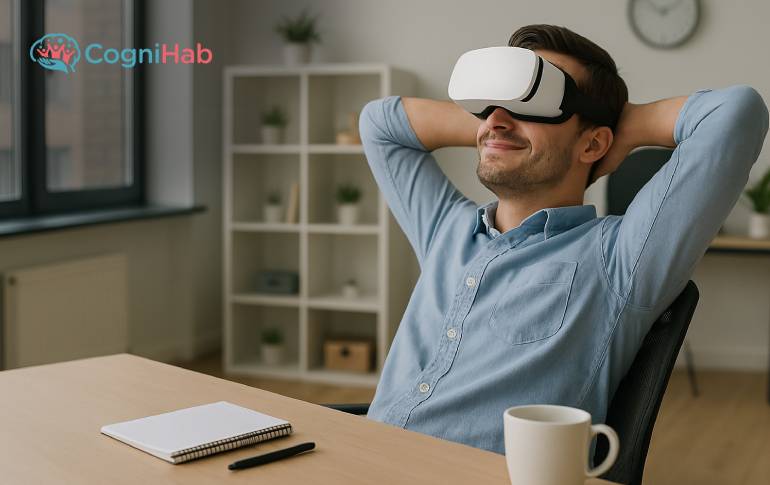How Virtual Reality is Helping Patients with Autism
Autism is a spectrum disorder meaning it affects each individual in a different way that is unique to the specific individual. Adults and children with autism have challenges in behavior, social skills, verbal and non-verbal communication as well as sensory and attention issues that impact their lives.
However, they also have unique identities, quirks, and preferences just like anyone else.
For many years, doctors and researchers all around the world have been on the lookout for therapies that can help Autistic kids cognitively grow, evolve & learn to react like everyone else.
The main challenge that most of these therapies face is their inadequacy to replicate real like scenarios which actually troubles Autistic kids. For e.g. for an Autistic kid which has difficulty in making eye contact when interacting in a group the only way he/she can improve or become comfortable with interacting in a group is when they actually do so.
Unfortunately, it is medically not advisable to forcefully put Autistic kids in an uncontrolled troublesome environment, hence the next best way these kids can learn to overpower their discomfort is by simulating the real-world situation in a controlled environment.
It is this unique need of Autistic patients which makes Virtual Reality for the treatment of Autism the most effective and go-to solution for people suffering from Autism disorder.
There are many ways Virtual Reality is helping Autistic patients, some of these ways areas listed below:
Virtual Reality to educate Autistic children
Autistic kids have a hard time focusing on a given, particular context. Their mind wanders off in the vastness of space.
But during the last two decades, there has been immense research on the use of VR to educate autistic children. The use of virtual reality autism technology allows exposure to the real world to train social skills in a controlled, repeatable & safe virtual environment.
These are computer-generated imageries where the kids learn to establish themselves, prepare themselves to make their way in the real world. The lessons are mostly animated so it becomes easier for the patient to grasp the theory, the concepts.
Virtual Reality helps patients with job interview training
In one of the researches, the researchers focused on giving autistic patients training on how to give interviews with interviewers ranging from soft to aggressive.
This helped them get comfortable, get clarity, and also get anxiety and stress reduction. Eventually, when the real interview situation arrived, they managed to control their emotions better & maintained cognitive balance while responding to the questions
1. Practice public speaking
One of the applications of VR in healthcare lets autistic children practice public speaking. An environment is created with avatars sitting as an audience which fades away when eye contact is not made with them.
Here, the kids are made to speak to the room filled with virtual avatars i.e. they are encouraged to look around the audience while delivering the speech and make eye contact thus making them efficient communicator
3. School Trip Preparation
There are so many reasons why children look forward to a school trip. The chance to experience something new, getting a taste of learning in different contexts.
However, for some children, it can cause a feeling of anxiety. So how about going to that trip location and shooting that in 360-degree camera and making the children see that in VR beforehand.
This can be used again and again till the autistic kids become comfortable & familiar with the environment & its complexities.
4. Transition to class seats
Autistic students using pre-designed school classroom virtual reality modules learn about their schools, their classrooms, the places where books and other things are kept, exact position, look and feel of the benches where they would sit, their class teachers, etc. through the use of use of VR healthcare solutions before coming to the school so that they can better control their emotions when the uncomfortable situation comes up.
5. Museum tours
Some of the studies show that if autistic children are made to view the museum virtually, they feel less anxious, less stressed, and more prepared to go and see the museum in real life.
6. Fears and Phobias
Phobias that often impact autistic children have also been tackled using VRET (Virtual Reality Exposure Therapy). These phobias can include fear of public transport, classroom, heights, public speaking, insects, etc.
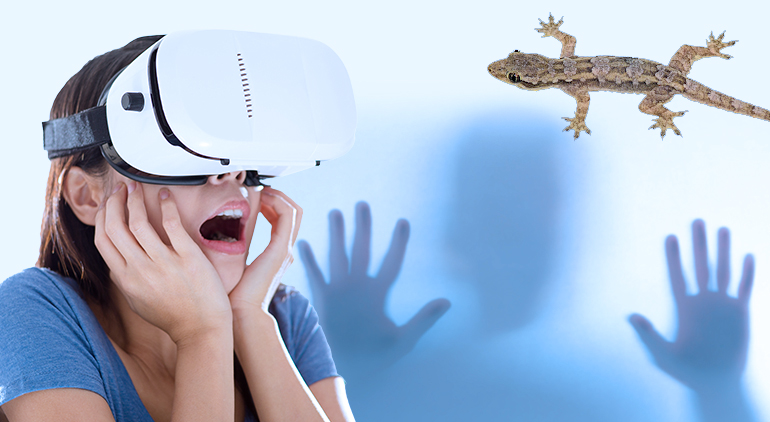 Therapists while monitoring their patients gradually increase the level of exposure of these phobia elements hence elevating the fear from the minds of autistic patients step by step.
Therapists while monitoring their patients gradually increase the level of exposure of these phobia elements hence elevating the fear from the minds of autistic patients step by step.
7. Shopping malls
Similarly, with shopping malls, autistic patients are made to watch the ins and outs of a shopping mall. Therefore, they are more prepared and more ready to face the world inside a shopping mall when they actually travel.
8. Air Travel
The airport, its long lines, unpredictable waits, and changes in routine can be a particularly disturbing context for autistic patients.
Some researchers have made a real-world rehearsal of air travel using virtual reality. This helps autistic patients to familiarize themselves with the process and be well prepared in advance.
9. Relaxing Journeys
The immersive Virtual Reality driven relaxing journeys are made through computer-generated imageries and animations.
These customized journeys experienced under a controlled environment provide a safe escape from the troublesome scenarios and help the autistic patients feel calm and focused on the very moment.
Virtual Reality Autism Training to Care Givers
The nurses and the people looking after an autistic individual are given training using Virtual Reality wherein, they experience life from the point of view of an autistic patient.
It helps them understand how and why an autistic kid feels anxious, how these patients react to troublesome situations etc.
This ability of the VR to help the caretakers learn about the whereabouts of the autistic patients by experiencing the life of these patients itself makes VR a very powerful tool for these caregivers.



